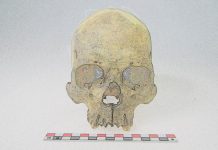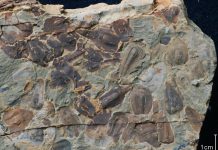
Paleontologists at the University of Southampton’s EvoPalaeoLab have made an intriguing discovery about the ancient spinosaur species that once roamed prehistoric Britain.
Analyzing a spinosaur tooth from the collections of the Hastings Museum and Art Gallery, the researchers found evidence of multiple distinct spinosaur groups in Cretaceous Britain.
The fossilized tooth, gifted to the museum in 1889, was collected from rocks dating back 140 to 125 million years ago, known as the Lower Cretaceous rocks of the Wealden Supergroup.
This region, located in south-eastern England, is renowned for its spinosaur fossils.
Previously, most isolated teeth found in the Wealden were attributed to a particular spinosaur species called Baryonyx, which was discovered in Surrey in 1983.
However, the new study published in the journal PeerJ challenges this assumption.
The researchers employed various techniques to examine the tooth and determine its species. Surprisingly, the tooth did not match the characteristics of Baryonyx, indicating that it belonged to a different type of spinosaur.
Lead author Chris Barker, a Ph.D. researcher specializing in spinosaurs, explains, “We used different methods to identify this specimen and test whether isolated spinosaur teeth could be linked to Baryonyx.
The tooth did not match Baryonyx in any of our analyses. It must belong to a different spinosaur species.”
These findings support previous studies by the EvoPalaeoLab team, which suggested that the spinosaurs in southern England were more diverse than previously believed.
In recent years, the team named a new spinosaur species called Ceratosuchops from the Isle of Wight, and they also announced the potential discovery of Europe’s largest land predator, known as the White Rock spinosaur.
Importantly, these various spinosaur species did not coexist in the same time period but instead lived in the region across a span of over 15 million years during the Early Cretaceous.
This study highlights the significance of museum collections in uncovering new knowledge. Curators play a vital role in navigating the collections and aiding researchers in reevaluating specimens.
Dr. Neil Gostling emphasizes the importance of museums and their potential for rediscovering valuable information.
The researchers further explain that dinosaur teeth contain intricate anatomical details that can be analyzed to understand their similarities and differences.
By studying the spinosaur tooth from the Wealden, they revealed the existence of previously unrecognized spinosaur species from poorly studied sections of the region’s history.
They hope that further discoveries will shed more light on these intriguing ancient creatures.
This research serves as a reminder that even well-explored regions like southern England can yield surprises and contribute to our understanding of dinosaur diversity.
It underscores the importance of ongoing exploration and investigation, both in the field and within museum collections, to unravel the secrets of prehistoric life.



